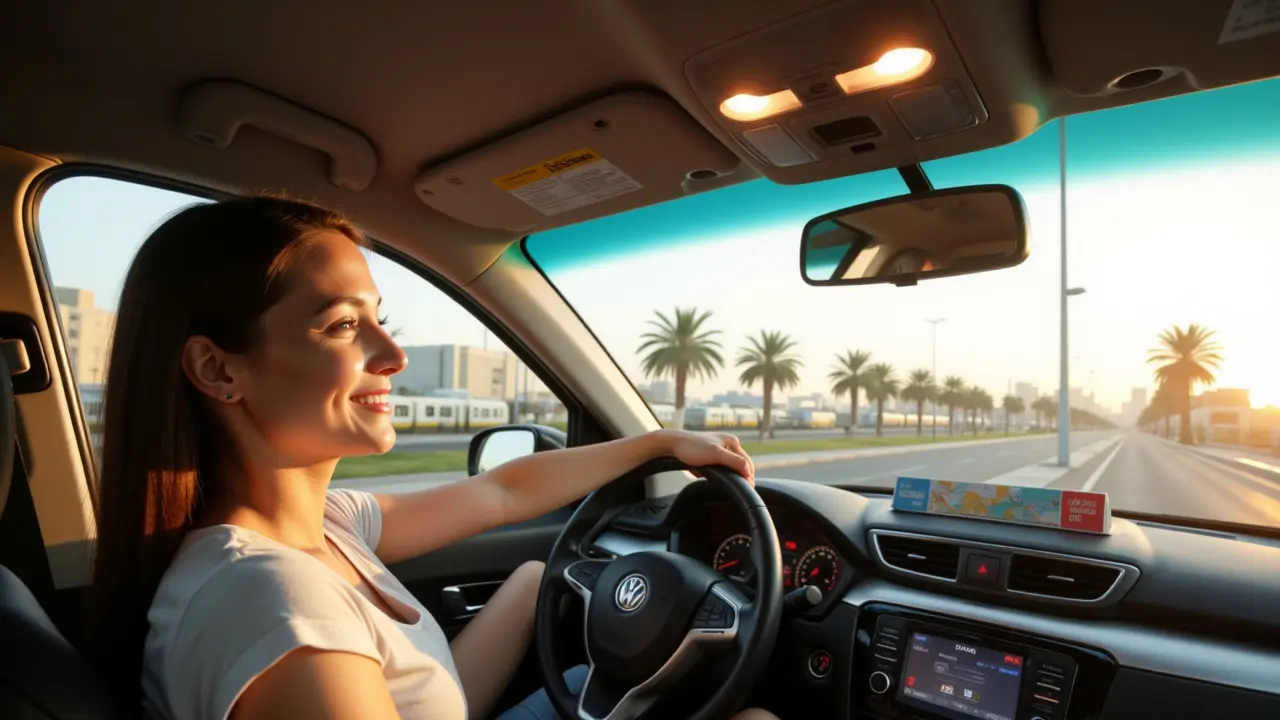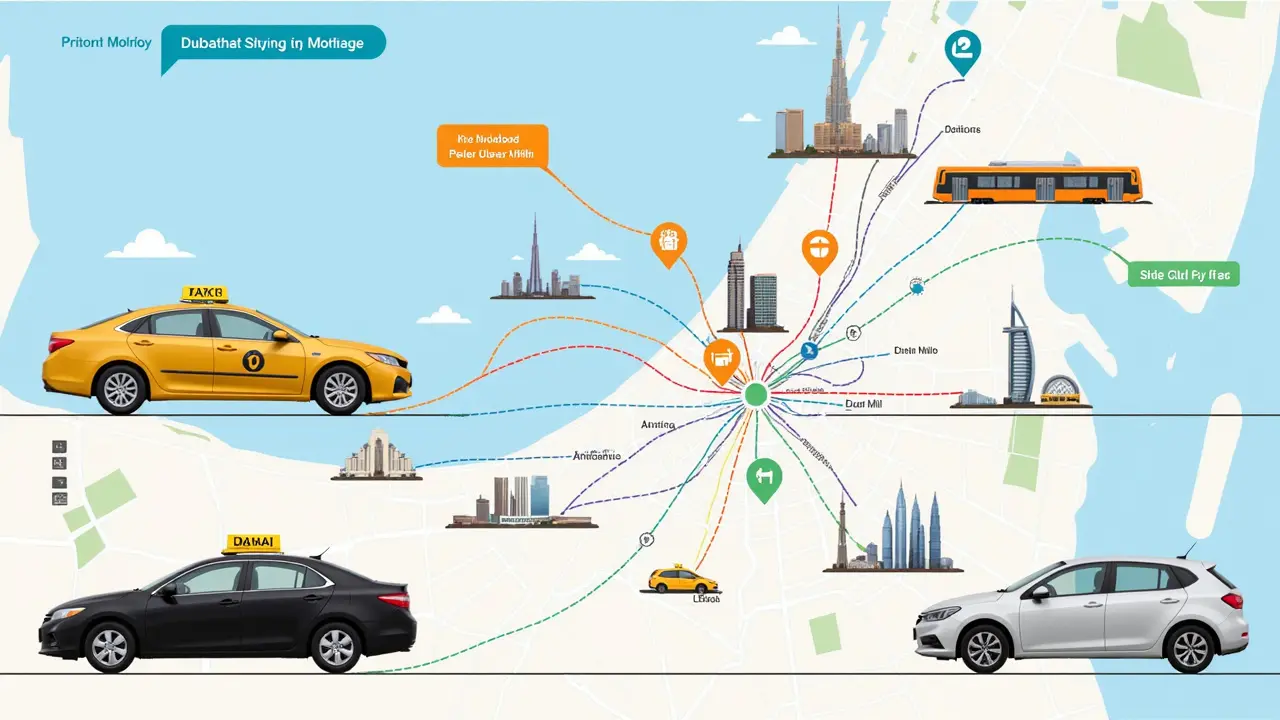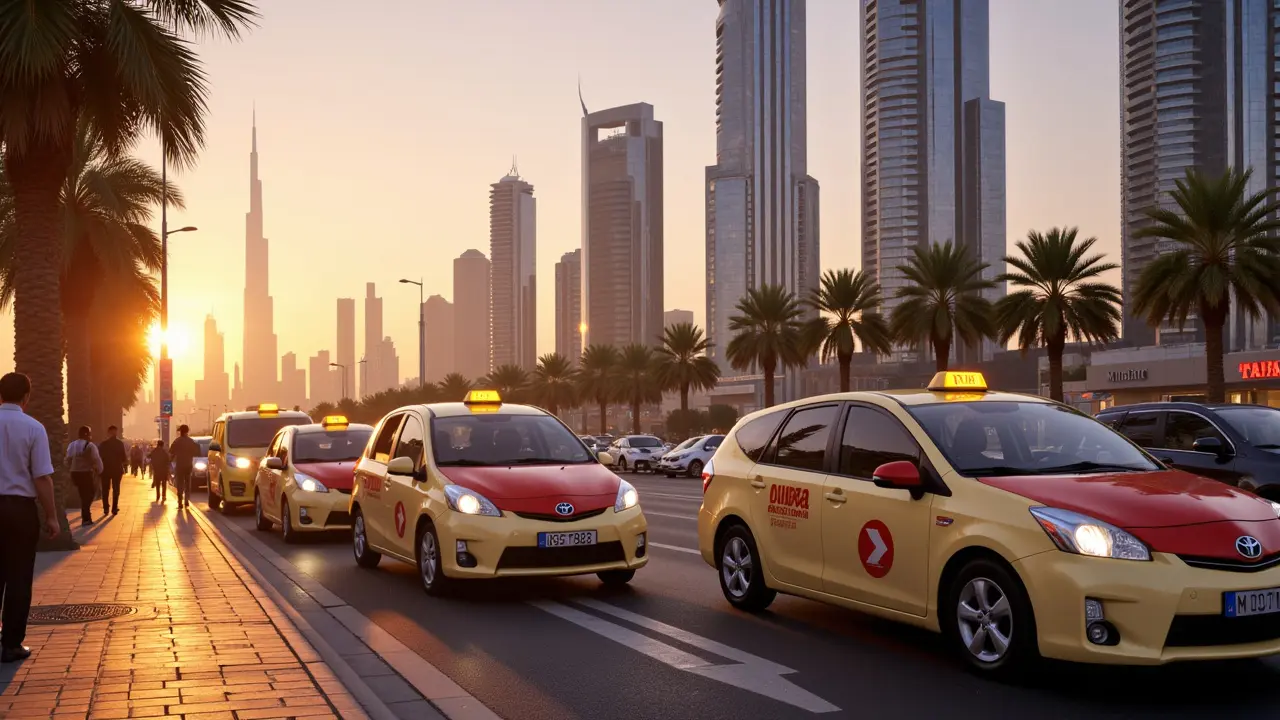Are Dubai Taxis Really Expensive? Facts, Context, and What You Get for Your Dirhams
How much does it actually cost to hop in a Dubai taxi? Most people picture Dubai as a playground for billionaires, so it’s easy to assume taxis there must cost a fortune. But is that image really accurate? Grab your imaginary suitcase, because we’re peeling back the glossy surface and getting into what Dubai taxis really charge, what you’re paying for, and how it all stacks up to the city’s futuristic style.
First, let’s lay out some real numbers. Taxis in Dubai use a metered system, regulated by the Dubai Roads and Transport Authority (RTA). That means no haggling, no back-and-forth, just a straightforward meter ticking up as you cruise past Burj Khalifa or sail toward the beach. As of July 2025, the standard starting fare for a regular taxi (think Toyota Camry, nothing flashy) is 12 AED if you’re hailing from the airport, and 8 AED anywhere else in the city. That’s about £2.60 from the airport or £1.70 elsewhere. Each extra kilometer adds around 2.25 AED—so a 10 kilometre journey setting out from central Dubai would land you somewhere around 30-35 AED, or about £6.50-7.50.
One thing rarely mentioned: Dubai’s taxis are a wild mix of comfort and reliability. The fleet is mostly Toyota Camrys, all air-conditioned, cleaned daily, and driven by licensed professionals who usually speak English. You won’t struggle to flag a cab—there are over 11,000 RTA taxis scurrying around the city, reportedly handling roughly 200 million passengers each year. Now, yes, Dubai does offer fancier rides if that’s your thing. Pink-roofed taxis, driven by women and aimed at families or solo female travellers, come with the same base rates. Lexus taxis are a thing, too, but you’ll pay a starting fare of 20 AED for that luxury slipstream.
Now let’s talk why these rates seem ‘cheap’ compared to London or New York (where basic taxi fares start at around £3-4 before the meter even budges). Dubai’s petrol is subsidized, so prices stay lower. Plus, the RTA keeps tight reins on the fare system to make transport accessible for locals and the city’s huge expat community. There aren’t any strange add-on fees either, except for a 4 AED booking charge if you use the RTA’s Hala app or dial for advance pickup. Want to pay by card? All cabs offer contactless options now—even Apple Pay and Samsung Pay are in the mix.
You probably want to know: is there a way to make Dubai taxis cheaper still? Yes. Avoid peak times like weekend evenings near tourist hotspots, where traffic can drag out your ride and tick the meter higher. Cash fares and digital payments cost the same, so no hidden surcharges there. And here's a sneaky hack—if you’re near a metro station, you can often finish your trip quicker (and cheaper) by hopping out and riding the fast, gleaming Dubai Metro instead. Combine taxis and metro for long journeys; your wallet will smile.
The last thing to keep in mind is tipping. It’s not required by law, and drivers don’t expect big tips, but rounding up to the nearest 5 AED is a nice gesture. That small extra isn’t make-or-break, but it means a lot to drivers who usually work extremely long shifts in Dubai’s heat.
Dubai taxi cost may not scream “budget,” but it’s nowhere near the eye-watering prices of some cities. You’re getting air-conditioning, reliability, and 24/7 coverage in a sparkling, busy city. For travelers who value freedom to roam and skip the summer sun, taxis hit that sweet spot between comfort and cost. But it’s not just about the price—you’ll see Dubai at street level, passing world-famous towers, gold markets, and even the odd stray camel if you’re lucky. Not bad for the price of a meal deal in Bristol.

A Close-up Look: Types of Dubai Taxis, Booking Tools, Safety Measures, and What Riding Feels Like
The RTA runs an impressively organized taxi system, and that includes options you probably wouldn’t expect. Regular cabs make up the bulk, but you’ll also spot special pink taxis, airport taxis (with more luggage space), hybrid vehicles, and limousines for those “James Bond in the desert” kind of days. Here’s a quick rundown:
- Standard City Taxi: Beige cars, red roofs—these are everywhere, perfect for a solo traveler or group of friends hitting The Palm after brunch.
- Airport Taxi: Slightly bigger, sometimes a bit more expensive, but designed to handle all those suitcases and family trips coming straight from arrivals. They charge a flat airport pickup fee (12-25 AED depending on distance—double-check at the rank for updates).
- Women’s Taxis: Pink roofs, female drivers, same prices as the regular cabs, but with added peace of mind for women traveling late or solo.
- Limousine Taxis: Black Lexus rides, plush interiors, and a jump in price (think 20+ AED starting price and 3 AED/km), but sometimes you just want to play the movie star, right?
- Hybrid/Eco-Friendly Taxis: Identical fares, but you can feel smug about your carbon footprint, especially around the Marina or Jumeirah Beach.
Booking is a breeze. The Dubai RTA recently amped up its Hala e-hailing app (built in partnership with Careem, Dubai’s answer to Uber) so you can summon a taxi with your phone, track its arrival in real time, and even split fares with friends. No app? Just hail on the street the old-fashioned way, or call the RTA hotline. RTA cabs always run the meter, so if anyone tries for fixed pricing on the side, politely decline and hop to the next ride—Dubai is not that kind of city.
What about language barriers? Honestly, you’ll find most Dubai taxi drivers can handle basic English, but it helps to jot down your hotel or destination on your phone. If you’re heading anywhere off the beaten path, grab a quick screenshot of the map. For famous spots like Dubai Mall or Burj Al Arab, just say the name and you’ll be whisked off, no problem.
Your ride itself will feel… unremarkably comfortable. All taxis have air-con blasting to battle Dubai’s wild summers, and the interiors are cleaned and sanitized between every shift. No need to worry about sharing with strangers—Dubai still sticks to a one-group-per-cab rule. Long trip? There’s no shortage of cabs willing to cross into Sharjah or even Abu Dhabi, but higher fares and toll road (Salik) surcharges can apply. If you’re traveling at rush hour (especially on Sheikh Zayed Road), buckle up for slow city traffic, but the meter ticks at a slower rate when you’re gridlocked.
Concerned about safety? Dubai takes this seriously. Cabs are regularly inspected, drivers have to pass strict medical and background checks, and GPS tracking is standard in every vehicle. Women can feel at ease in pink taxis, but the city in general is famously safe even late at night. Lost items are quickly returned thanks to logged journeys and the RTA's efficient lost-and-found hotline.
| Taxi Type | Starting Fare (AED) | Per Km Fare (AED) | Special Features |
|---|---|---|---|
| Standard (Red Roof) | 8 (12 from airport) | 2.25 | Most common, air-con, English-speaking drivers |
| Pink Taxi (Women Only) | 8 | 2.25 | Female drivers |
| Airport Taxi | 25 | 2.25 | Extra luggage, straight from terminals |
| Limousine Taxi (Lexus) | 20 | 3 | Luxury, black cars |
| Hybrid/Eco Taxi | 8 | 2.25 | Eco-friendly |
Never skip wearing your seatbelt—Dubai police issue instant fines, and the driver is responsible for everyone’s safety. And don’t worry about night surcharges; Dubai taxis run the same meter 24/7, so popping out for late-night shawarma won’t blow your budget.

Money-Saving Tips, Tricks for Booking, and How Dubai Taxis Compare to Other Options
Ready for the inside scoop on stretching your taxi cash? Here’s what works:
- If you’re close to public transport, use the Metro for the bulk of your journey and a taxi for the last mile. It’s literally what the locals do.
- Group up with friends. As long as you don’t go over five passengers, the fare’s the same, and splitting makes even longer journeys a breeze.
- If your hotel offers a fixed-price shuttle, check the math—metered RTA taxis are almost always cheaper than hotel cars.
Curious how taxis compare to ride-hailing apps like Uber and Careem? Here’s the secret: RTA cabs are usually cheaper, especially for short rides. Apps offer luxury or XL options, but those can balloon up to double the price during peak times or when there’s a big event in town. Here’s a simple comparison:
| Service | Base Fare (AED) | Per Km (AED) | Extras |
|---|---|---|---|
| RTA Taxi | 8 | 2.25 | Fixed rates, always metered |
| UberX | 12 | 2.80 | App-only, variable rates |
| Careem | 10 | 2.65 | App-only, surge pricing possible |
If it’s a festival, New Year, or Expo, expect the apps to hike fares up to double or more—but RTA taxis never surge. You might need to wait, but at least there’s no sticker-shock at the end.
- When searching for a ride, check the Hala app first (integrated in Careem and linked directly to the RTA fleet). It’s the fastest way to compare wait times and prices.
- If you’re ever unsure about a route or worried about getting overcharged, watch the meter and keep an eye on Google Maps, too. Dubai’s drivers stick to the rules, but it never hurts to double-check.
- If you’re new in town, note the city uses several toll gates (Salik). Crossing those adds a 4 AED extra per gate to your fare, but all details are printed on the fare slip at the end.
Taxi rules change from time to time, so always confirm fares at the official RTA website or the app before you travel. The city aims to update every year, but fare rises are mild—usually less than 10%—and always announced.
Travelling with kids? Taxis don’t automatically come with booster seats, so bring your own if that’s a must. For wheelchair-friendly taxis, pre-booking is needed, but you’ll get an accessible vehicle with a trained driver at the standard rate—no need to pay extra for accessibility.
And because Dubai is pretty spread out, always check traffic before booking. Sheikh Zayed Road looks lovely in drone shots but can turn into a parking lot at rush hour. Friday mornings are usually calmest—book then if you want to see the city at its breeziest.
- Standard Taxis are the budget-friendly default—fast, frequent, and metered.
- Airport taxis and limousines add comfort but sometimes at double the cost.
- Ride-hailing apps are tempting, but fares swing wildly at peak times, while RTA cabs keep things steady and predictable.
Got more questions? We’re covering them below so you can ride like a local on your next Dubai adventure:
| FAQ | Quick Answer |
|---|---|
| How do you pay? | Cash, card, or contactless via Apple Pay or Samsung Pay. All taxis accept cards now. |
| Do I need to tip? | No, but rounding up to the nearest five AED is polite. |
| Can I catch a taxi late at night? | Yes, taxis run 24/7. |
| Will the driver speak English? | Almost always, but a map screenshot helps for less-known spots. |
| Are there extra fees on holidays? | No, fares stay the same year-round. |
| How affordable are taxis compared to the metro? | Metro is cheaper, but taxis are quicker for non-central journeys or late at night. |
| Do I get a printed fare slip? | Yes, always. Helpful for expense claims or lost property issues! |
So there you have it—the real lowdown on Dubai taxi prices, with every tip and trick you need packed in for good measure. Your ride awaits, meter ticking gently, air-con humming, and palm trees streaming past your window. Happy exploring!






